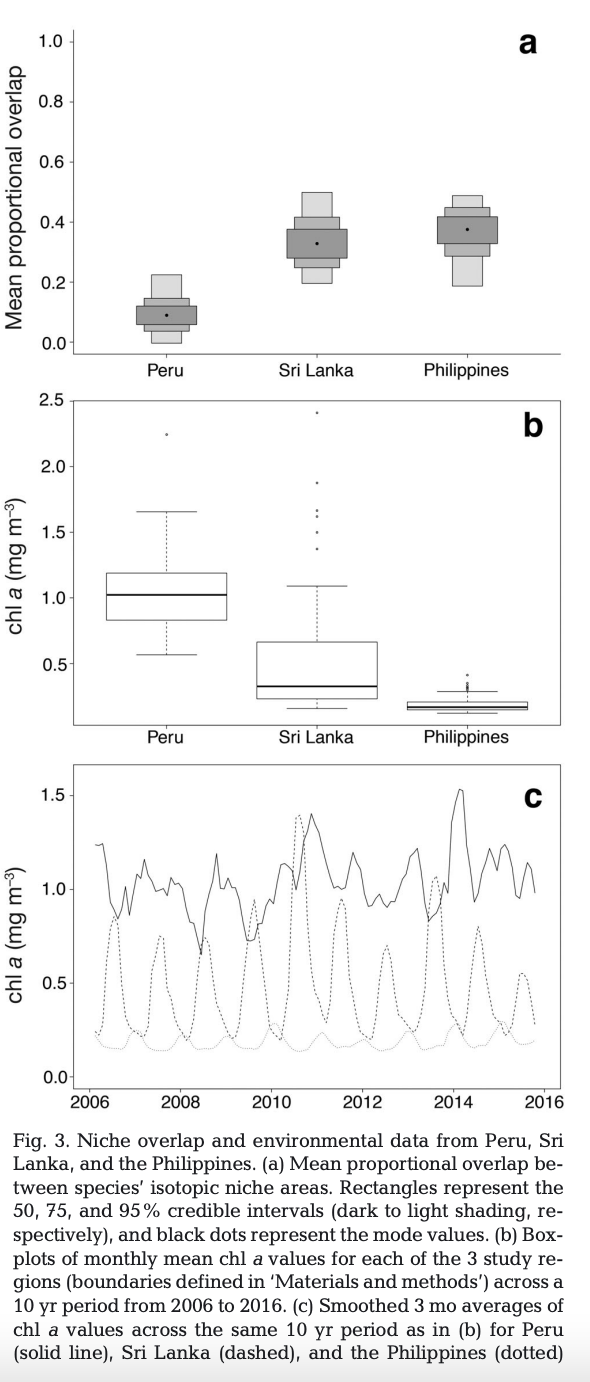Trophic overlap in mobulid rays: Insights from stable isotope analysis
October 2017
Joshua D. Stewart, Christoph A. Rohner, Gonzalo Araujo, Jose Avila, Daniel Fernando, Kerstin Forsberg, Alessandro Ponzo, Joshua M. Rambahiniarison, Carolyn M. Kurle & Brice X. Semmens
Keywords: Niche Overlap • Mixing Model • Feeding Ecology • Bycatch Risk
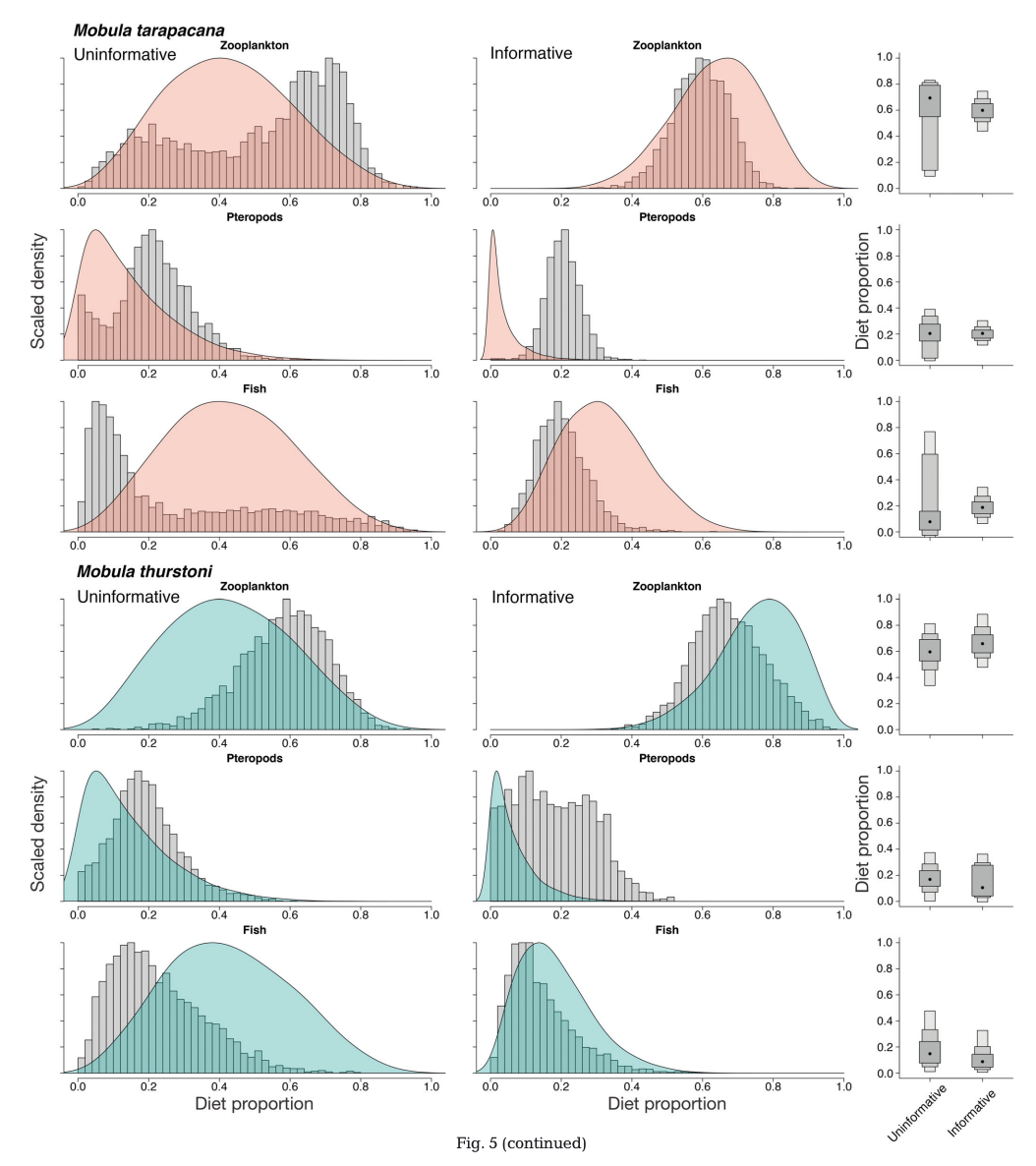
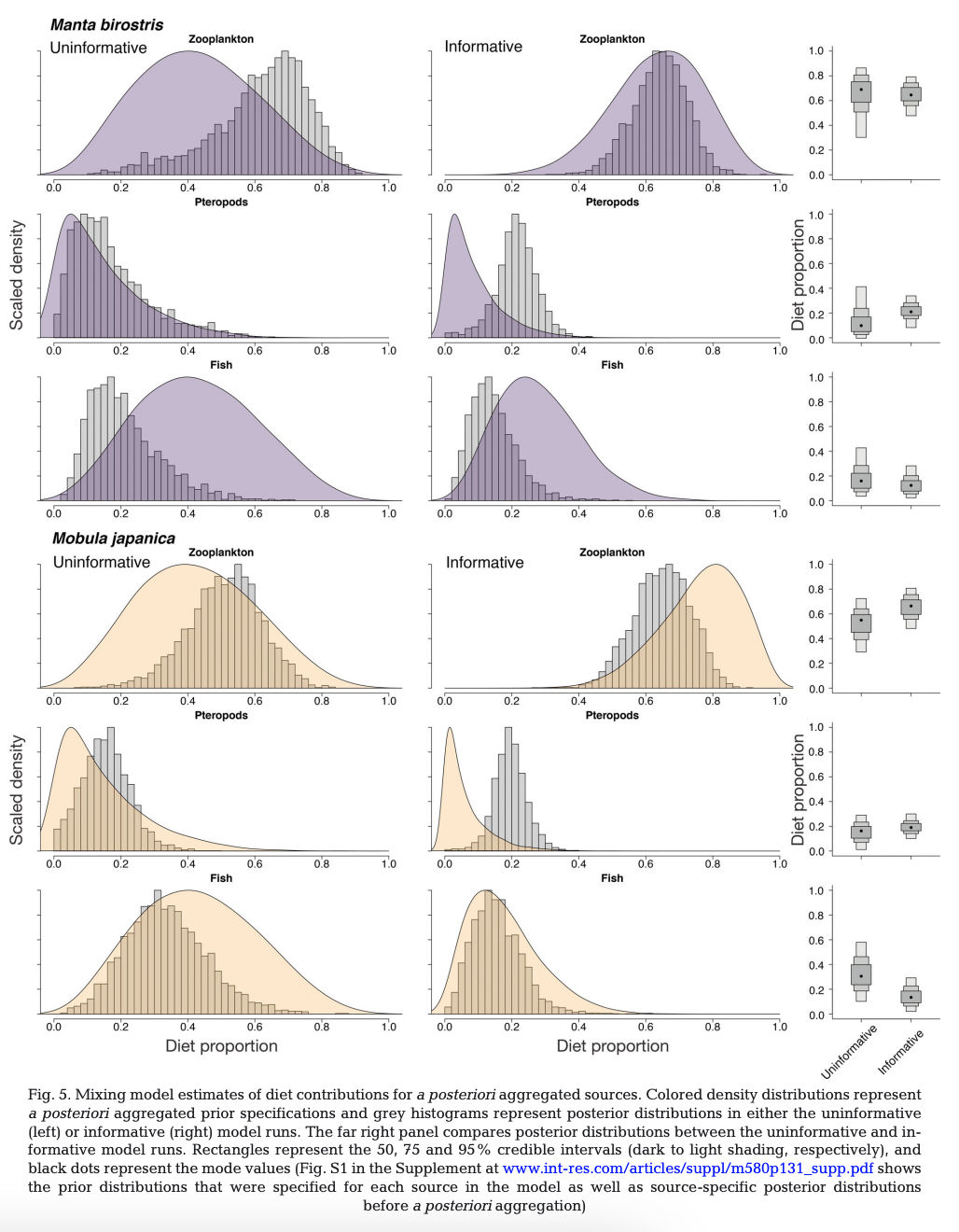
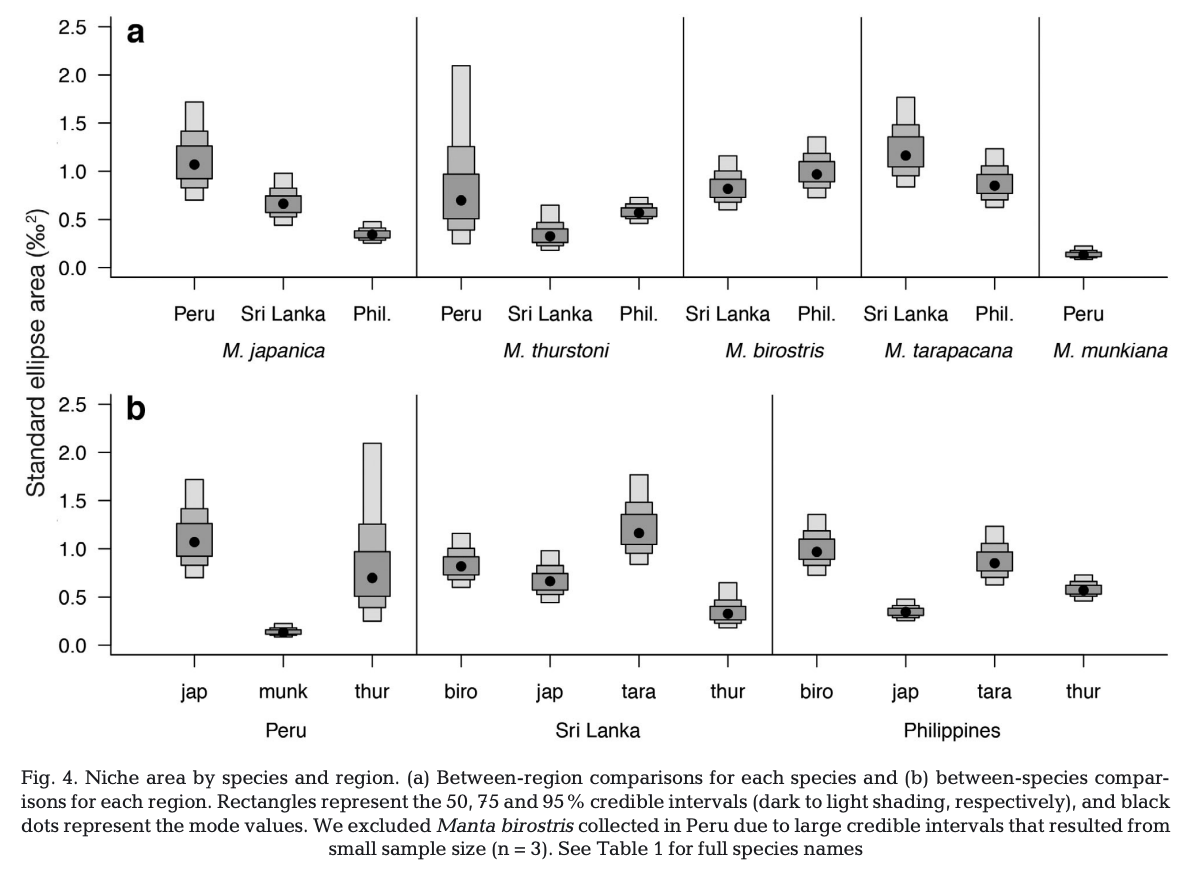
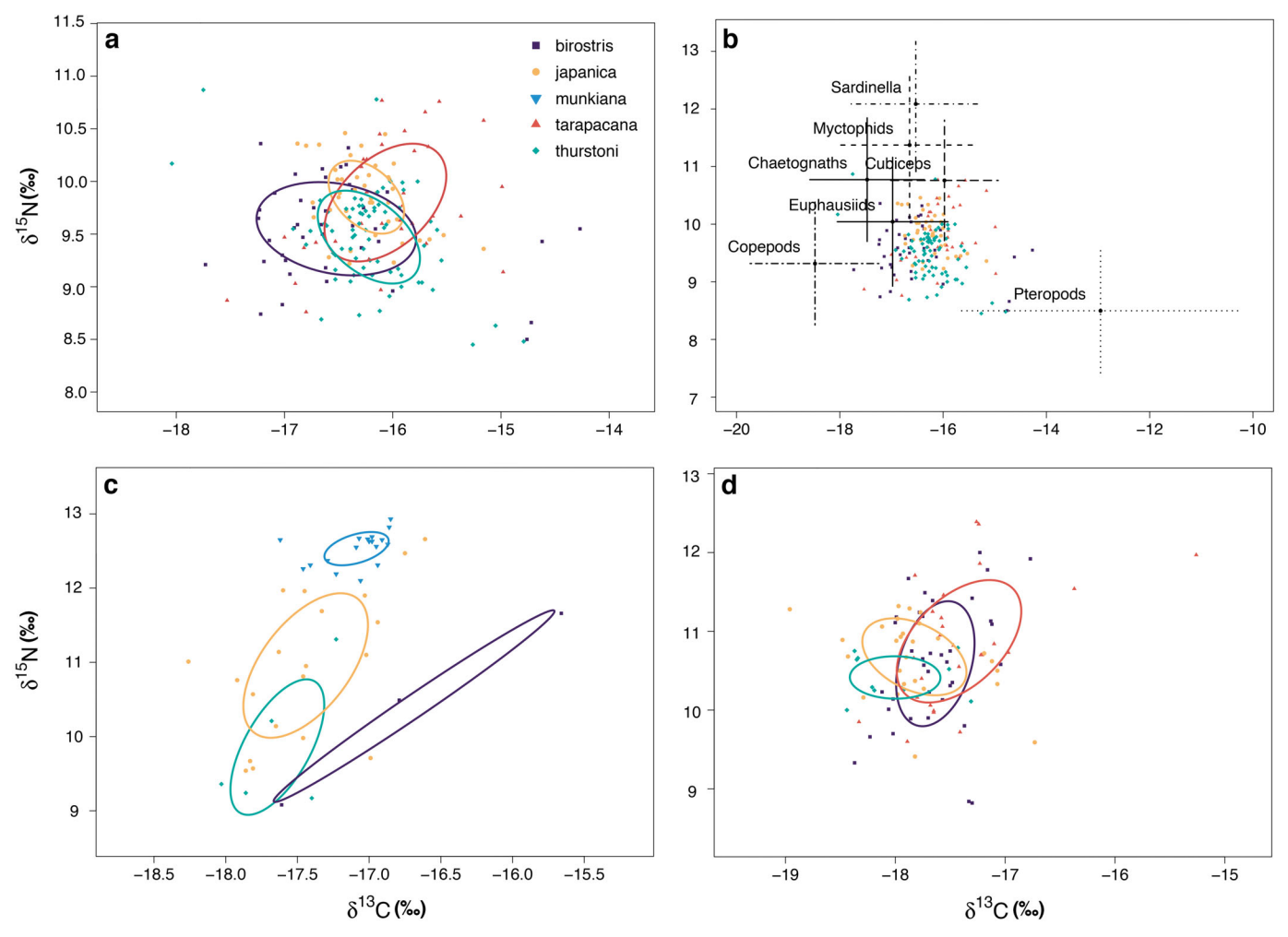
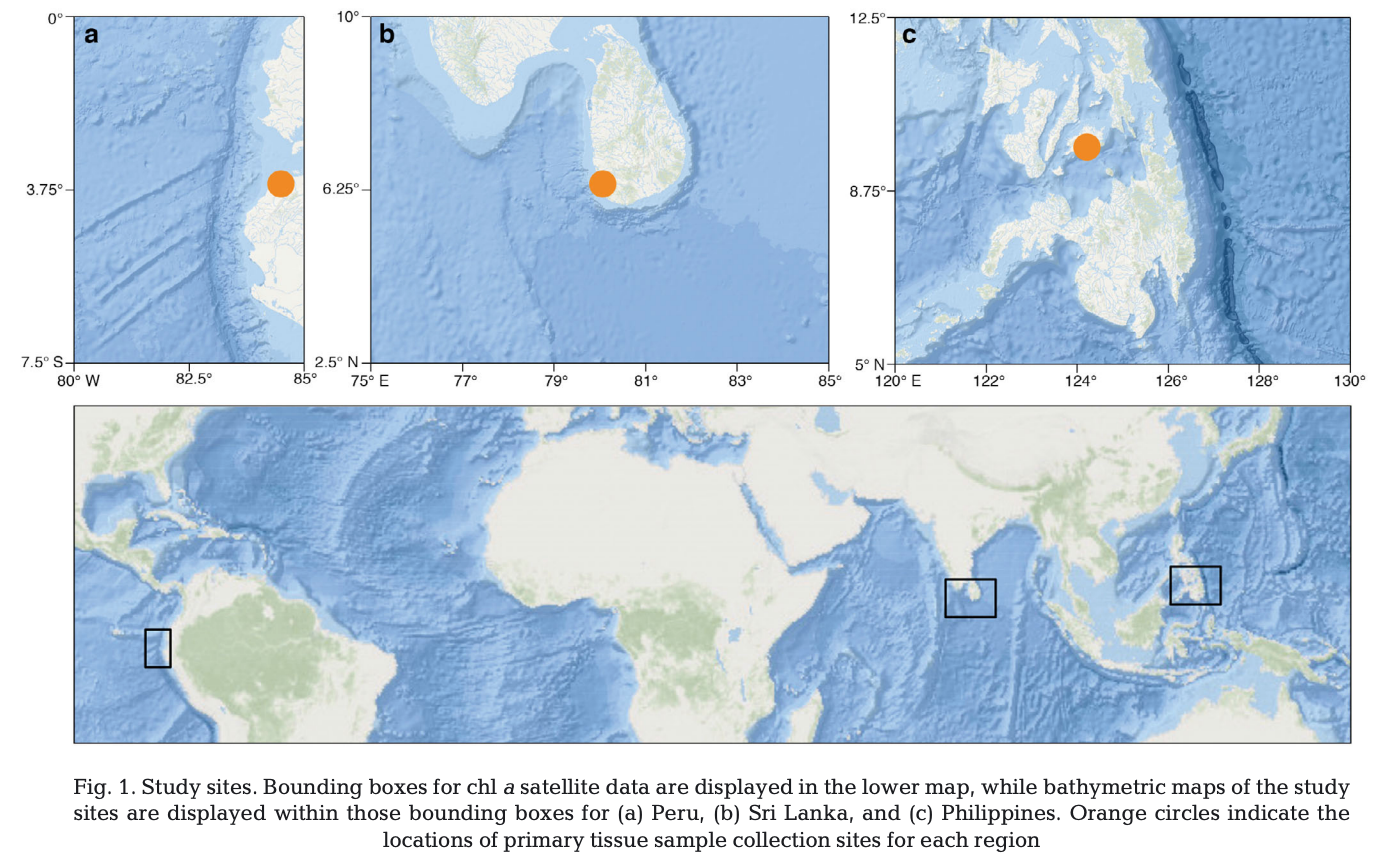
Summary: Mobulid rays, threatened by bycatch and targeted fisheries, have poorly understood habitat use and feeding ecology. Previous studies on diving behaviour and foraging strategies have shown variability across species but lacked comprehensive examination of feeding habitats and diets in a single location. This study uses stable isotope data from mobulids in the Indo-Pacific to analyse the feeding ecology of five species. Results reveal dietary overlap between sympatric species, contrary to prevailing theories, with overlap potentially related to productivity. Diet stability and a weak relationship between body size and isotope values are observed. These findings have implications for bycatch mitigation and explain multi-species mobulid bycatch in global fisheries.
Abstract
“Mobulid rays, a group of closely related filter-feeders, are threatened globally by bycatch and targeted fisheries. Their habitat use and feeding ecology are not well studied, and most efforts have focused on temporally limited stomach content analysis or inferences from tagging data. Previous studies demonstrate a variety of different diving behaviors across species, which researchers have interpreted as evidence of disparate foraging strategies. However, few studies have examined feeding habitats and diets of multiple mobulid species from a single location, and it is unclear if the proposed differences in diving and inferred foraging behavior are examples of variability between species or regional adaptations to food availability. Here, we use stable isotope data from mobulids landed in fisheries to examine the feeding ecology of 5 species at 3 sites in the Indo-Pacific. We use Bayesian mixing models and analyses of isotopic niche areas to demonstrate dietary overlap between sympatric mobulid species at all of our study sites. We show the degree of overlap may be inversely related to productivity, which is contrary to prevailing theories of niche overlap. We use isotope data from 2 tissues to examine diet stability of Manta birostris and Mobula tarapacana in the Philippines. Finally, we observe a significant but weak relationship between body size and isotope values across species. Our findings highlight challenges to bycatch mitigation measures for mobulid species and may explain the multi-species mobulid bycatch that occurs in a variety of fisheries around the world.”
Author Affiliations
Scripps Institution of Oceanography, University of California San Diego
The Manta Trust
Marine Megafauna Foundation
Large Marine Vertebrates Research Institute Philippines
Planeta Oceano
Department of Biology and Environmental Science, Linnaeus University
Blue Resources Trust
Division of Biological Sciences, University of California San Diego
Funded by
Ocean Park Conservation Foundation
PADI Foundation
Marine Conservation Action Fund at the New England Aquarium
Disney Conservation Fund
Abc* Foundation
WildAid
Shark Savers
Save Our Seas Foundation
Center for the Advancement of Population Assessment Methodology
NOAA ONMS Nancy Foster Scholarship
Robert & Patricia Switzer Foundation

